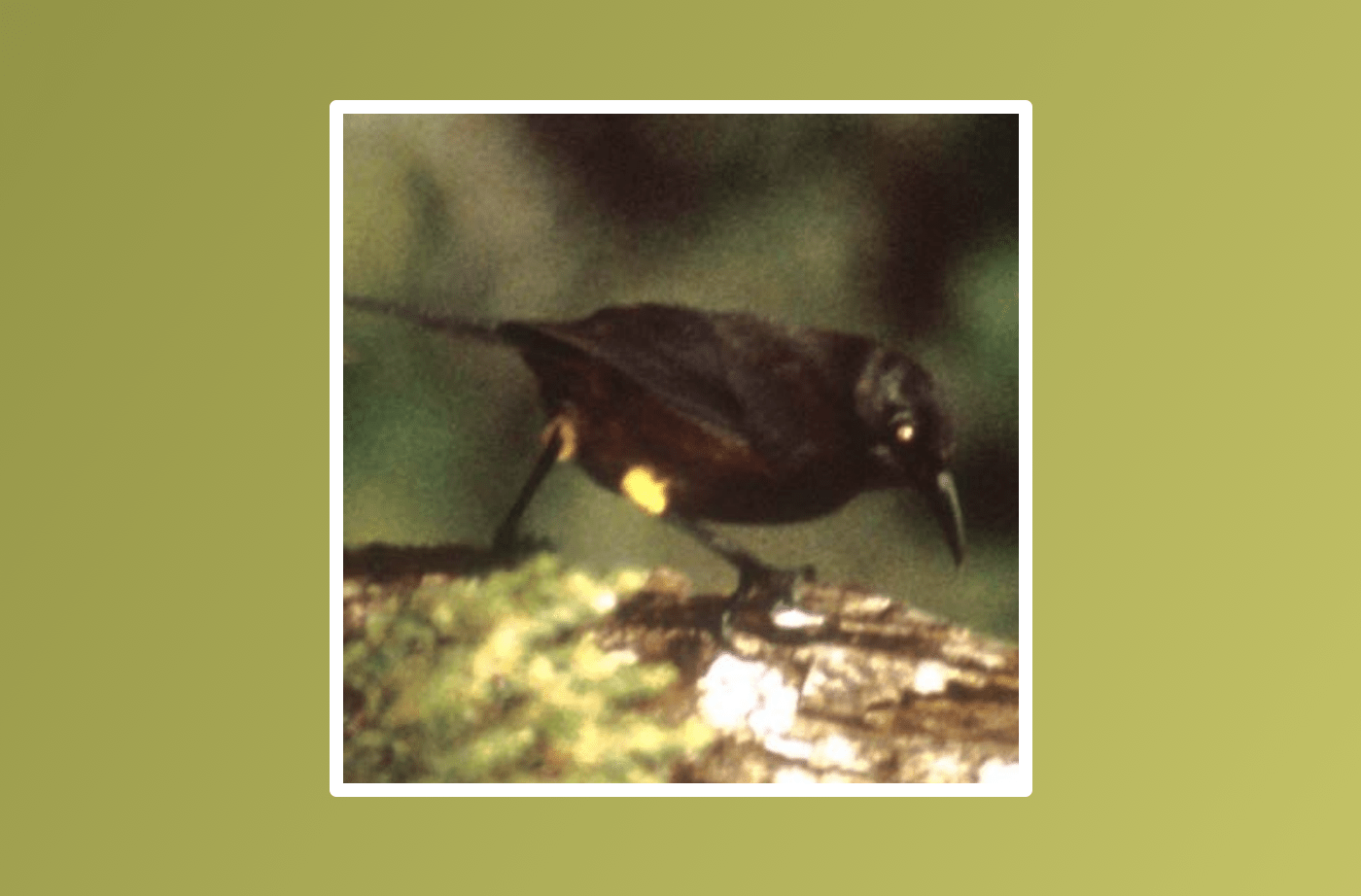The World According to Sound: Antiphonal Duets
2:14 minutes

Some birds, especially those in the tropics, sing what are known as “antiphonal duets.” These are duets where there is a rapid alternation of notes sung by each bird. Sometimes there is just a gap of a few milliseconds between the part sung by each bird. The tight-knit duets help mating birds locate each other.
The World of Sound team took the duets of several pairs of wrens recorded by Dr. Nigel Mann and separated the parts of the two birds. By separating the vocalizations of each bird, you can hear how perfectly the two parts fit together.
At the end of the piece you hear a bird whose mating call never gets answered. It’s a Kaua‘i ‘ō ‘ō bird that was recorded in 1984 by James Jacobi. It was one of the last recordings made of an ō ‘ō bird. The species is now extinct.
We encourage you to listen with headphones on!
The World According to Sound is a live audio show, online listening series, and miniature podcast that focuses on sound, not story. Producers Chris Hoff and Sam Harnett create intentional, communal listening experiences as a way to “reclaim autonomy in a visually dominated world that is increasingly fracturing our attention.”
These recordings and more are a part of their listening series, an immersive listening party where audiences from all over the globe experience a world of sound together, beginning. The next event is titled “Solitude” and takes place on Thursday, March 10. Science Friday listeners can get 25% off tickets and season passes by using the promo code SCIFRI25 at theworldaccordingtosound.org/tickets
Invest in quality science journalism by making a donation to Science Friday.
Chris Hoff is the co-producer of The World According To Sound podcast. He’s based in San Francisco, California.
IRA FLATOW: Before we head out the door this hour, how about a treat? A soundscape from The World According To Sound podcast. And for this one, I highly encourage you to wear your headphones.
[BIRDS CHIRPING]
CHRIS HOFF: Dr. Nigel Mann recorded these two bay wrens doing the little call and response. Here’s the female.
[BIRD CHIRPING]
And here’s the male.
[BIRD CHIRPING]
Now they’re going to sing together. This is called an antiphonal duet, except now we’ve separated their songs.
[BIRD CHIRPING]
These are actually two distinct birds. In 1984, James Jacoby recorded this kaua’i’ o’o bird. It’s a male calling for a female. But he never gets a response. This bird was the last one of its kind.
[BIRD CHIRPING]
IRA FLATOW: These sounds are part of a communal listening series The World According To Sound is hosting this winter. For tickets to their 90 minute binaural events, visit theworldaccordingtosound.org.
Copyright © 2022 Science Friday Initiative. All rights reserved. Science Friday transcripts are produced on a tight deadline by 3Play Media. Fidelity to the original aired/published audio or video file might vary, and text might be updated or amended in the future. For the authoritative record of Science Friday’s programming, please visit the original aired/published recording. For terms of use and more information, visit our policies pages at http://www.sciencefriday.com/about/policies/
John Dankosky works with the radio team to create our weekly show, and is helping to build our State of Science Reporting Network. He’s also been a long-time guest host on Science Friday. He and his wife have three cats, thousands of bees, and a yoga studio in the sleepy Northwest hills of Connecticut.
Kyle Marian Viterbo is a community manager at Science Friday. She loves sharing hilarious stories about human evolution, hidden museum collections, and the many ways Indiana Jones is a terrible archaeologist.
Ira Flatow is the founder and host of Science Friday. His green thumb has revived many an office plant at death’s door.